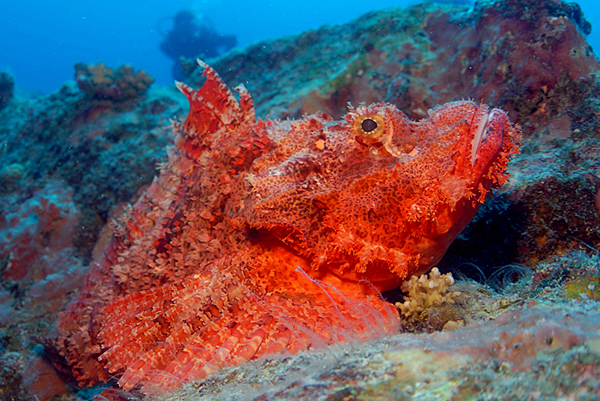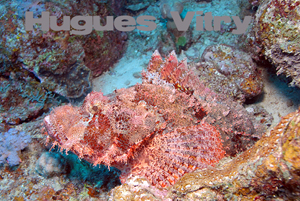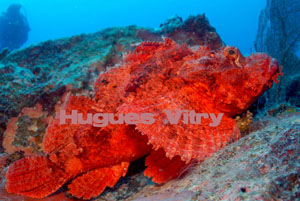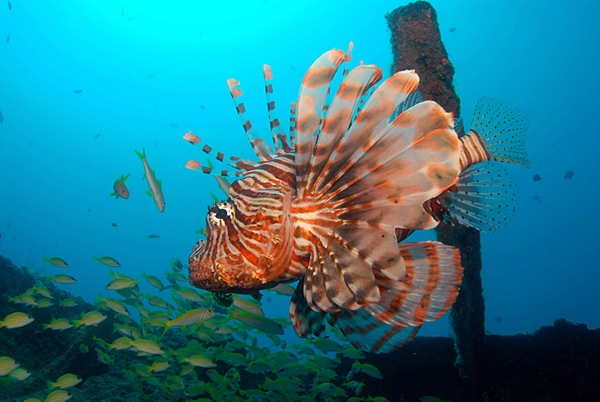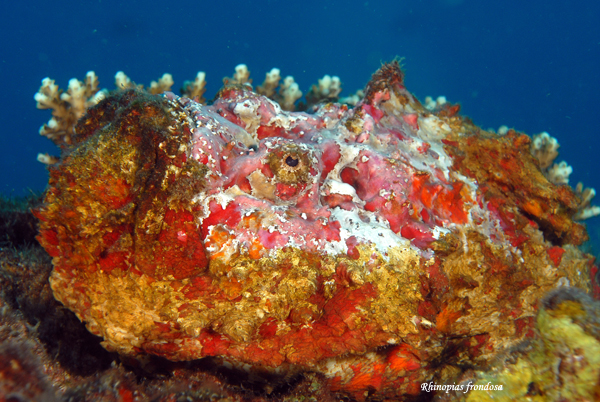Frogfish
Frogfish are parts of the antennariidae family( fish with antennas) or anglerfish.
Just like Chameleons, they are masters of camouflage, they can take the color and texture of their immediate environment rendering them almost invisible for the novice eyes.
They can be found anywhere, from shallow lagoons in sea weeds and sea grass, on coals, fancorals, sponges, on metallic structures of wrecks in sargassum (gulfweed) and other floating debris.
Frogfish is a lazy indolent animal that can stay years at the same place.
Opportunist animal they wait motionless wagging a small antenna to attract careless fish and in a split second their jaws will protrude outwards and swallow the inattentive prey.
There are many species of frogfish with different shape, color and sizes. Most of them are brightly colored.
Frogfish are of no danger to man, but it similarity with the dangerous stonefish is sometimes fatal to the frogfish, some ignorant people think that they are also as dangerous will savagely slaughter every single one on their way.
To defend itself the frogfish would emit a sort of a growl sound and by some fast tail movements, rub their rough skin against their intruders.
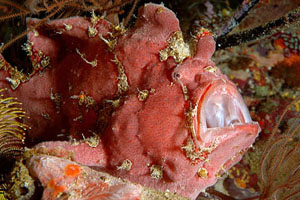
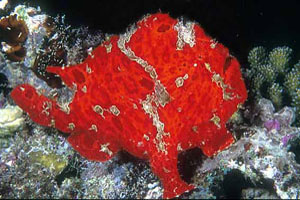
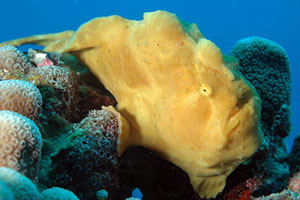
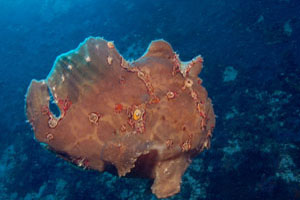
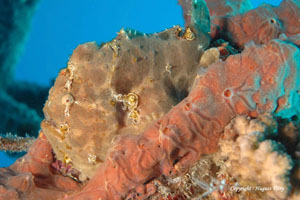
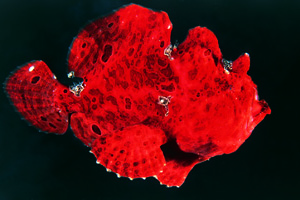
Scorpénidaes (Scorpionfish family)
This family includes many species and subspecies. They all have venomous stings. The most dangerous of the family is without contest the stonefish that is actually not really part of the scorpion family, but the stonefish can even be deadly sometimes.
There are many common species, others rare and few are endemics.
Indian Lionfish (pterois volitans)
The indian lionfish is one of the most common lionfish in Mauritius, they are also the biggest species of the family. The like to stay in places where lots of juvenile fish gather such as jetties, wrecks and coral crevices and at night they dwell on the shore line in few inches of water
Indian lionfish on a wreck in Trou aux Biches
Spotfin lionfish (Pteroïs antennata)
The Spotfin lionfish lives most of the day under rocks and corals reefs and are very active at night.
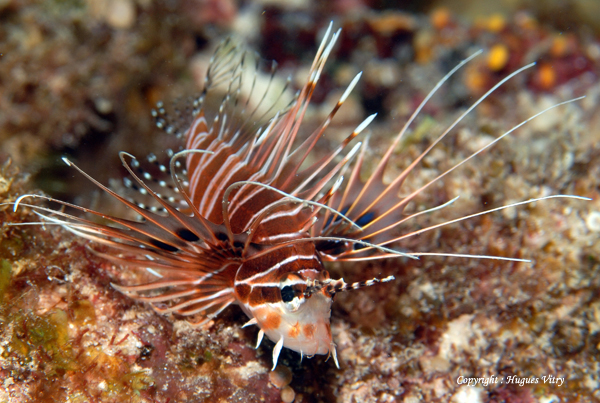
Spotfin Lionfish on Morays reef
Clearfin lionfish (Ptéroïs radiata)
This species is not present in the Mauritian waters south of the equator. Common in the red sea.
Zebra dwarf lionfish (Dendrochirus zébra)
The zebra dwarflionfish as the most Lionfish are night hunters and would hide during the day. They have an amazingly bizarre green reflection in their eyes.
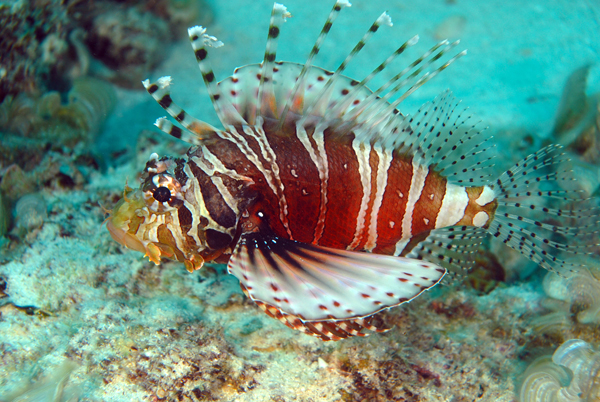
Zebra dwarflionfish on Water lily reef
Shotfin dwarfLionfish (Dendrochirus Brachypterus)
The shortfin dwarflionfish are not very common and they tend to run away form any source of avoid bright lights.
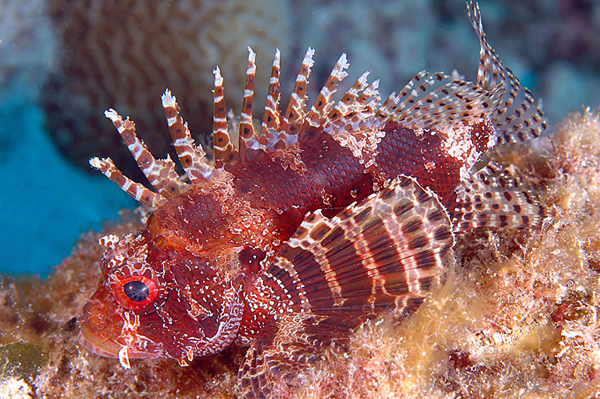
Shortfin dwarflionfish on the Pereybere Aquarium
Ocellated dwarflionfish (Dendrochirus Biocellatus)
Ocellated dwarflionfish are very shy and avoid direct daylight, They live during day time upside down in crevices and holes in dark places.
Their name comes from the two round spot that can be found on the back of their dorsal fins. Their scientific name (biocellata) means two spotted but in Mauritius most ocellated dwarflionfish have 4 spots such as in the photo below.
When disturbed, the swim away by moving nervously their dorsal spine
Their stings are venomous
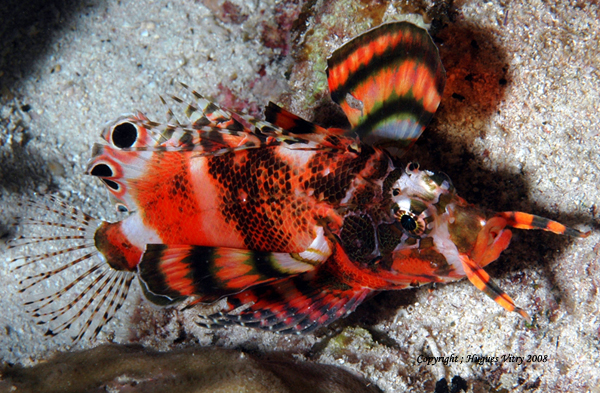
Dendrochirus biocellata (with four spots) Morays reef
Leaffish (Taenionotus triacanthus)
These fish are classified with the scorpionfish family but their sting are not so dangerous.
The hold their name by the way they swim and hunt, they normally move along with the surge and water movement like a dead leaf on the sea floor to approach their preys. They also remain immobile on the reef or in see weeds.
The have different colors that mostly adapt with their immediate environment.
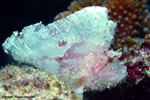
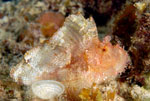
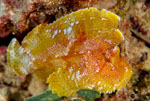
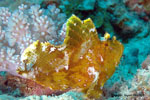
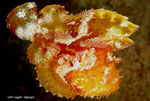
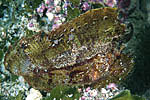
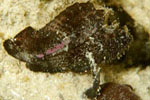
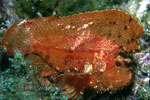
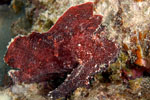
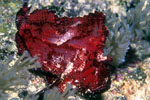
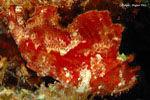
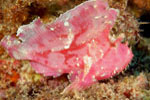
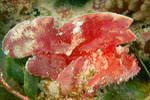
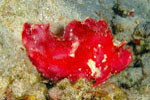
Stonefish (Synancea Verrucosa)
Stonefish are passive lazy fish that can stay in one same place for days and weeks. It is not rare to see sea weeds or algae growth on their skin.
They live in coral crevices or in between sea grasses or as most times entirely buried under the sand or rubble with only their eyes and mouth sticking out.They can match with their environment a become almost invisible
They have 13 to 15 venomous on their dorsal spines. Each spine is doted with two venom sacs located under the skin on each side of the spine and when the skin is pushed downwards it squeeze to venom sacs that release the venom into two cavities located on each side of the spine. There is another venom sac under the spine that releases the venom when the spine is pushed downwards and press on the venom sac, the venom is forced into the canal into the wounds of the victim.
If stung on a vein, the venom can kill a man. The poison is a thermolabile (that can be destroyed by heat) protein based neurotoxin that paralyzes the heart and lung muscles.
The required minimum local temperature is 60ºC or 135ºF for destruction of the poison.
When stung the victim must try to extract as much venom as possible with an adequate syringe and then dip the wound if possible in water as warm as possibly can.
It exists a vaccine against stonefish stings but it has to be administered within 15 minutes of the infliction of the sting to be very effective.
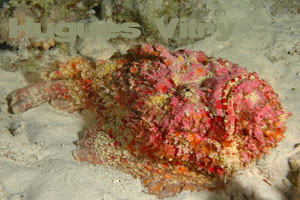
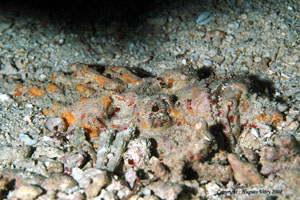
Weedy scorpionfish (Rhinopias)
There are few species of weedy scorpionfish. They look like big leaffish.
They are quite rare and the 3 following species can be observed here in Mauritius.
Mauritius scorpionfish (Rhinopias Eschmeyeri)
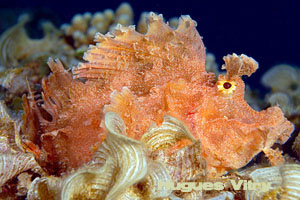
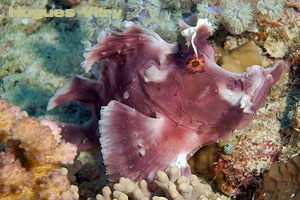
This species has been discovered in Mauritius and until recently it was believed that it could only be found in Mauritius (endemic) , but other individuals has been found in the indo-pacific regions.
Weedy scorpionfish (Rhinopias Frondosa)
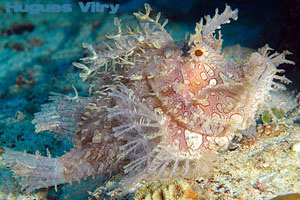
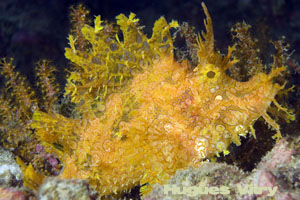
The weedy scorpionfish is quite rare and is almost invisible to novice eyes. The have an excellent camouflage and adapt their coloration to the immediate environment.
Their stings are poisonous and must be treated just as any scorpionfish
The third species is the the Rhinopias aphanes. even rarer than the two other species. Some individual have been found in shallow lagoons.
Giant scorpionfish (Scorpaenopsis oxycephala)
This species is the biggest of all scorpionfish family. They live in between colorful corals and can match with their environment a become almost undetectable.
They have venomous spines without venom bags.
